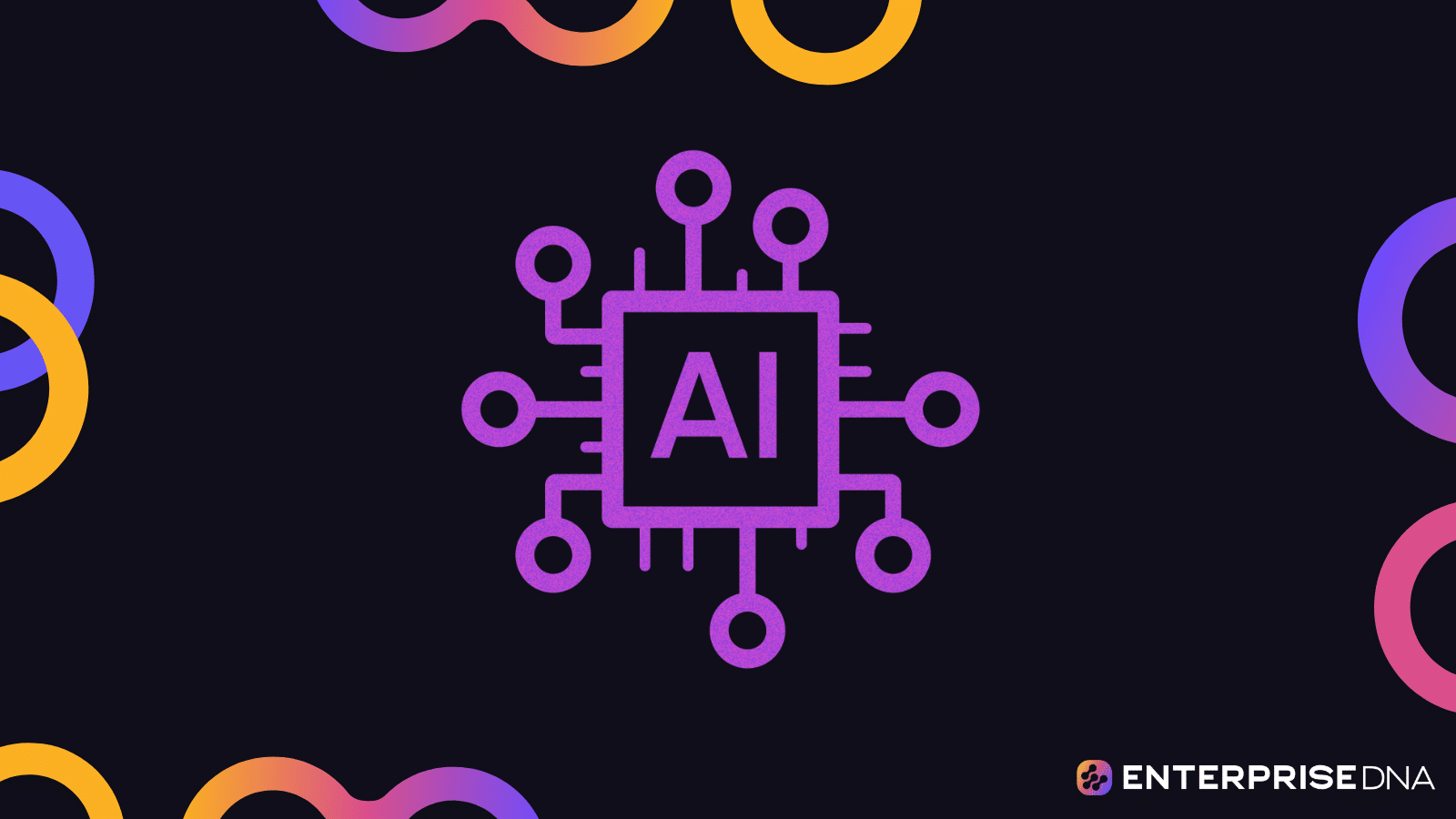Machine learning algorithms are like the superheroes of the tech world. They swoop in, armed with data and mathematical magic, and save the day by making sense of the information overload we face every day. From personalized recommendations on Netflix to self-driving cars, machine learning algorithms are at the heart of many cutting-edge technologies.
What are the 5 machine learning algorithms you should know?
- Linear Regression
- Logistic Regression
- k-Means Clustering
- Decision Trees
- Random Forest
In this article, we’ll introduce you to the most popular machine learning algorithms in the world. Understanding these algorithms will help you choose the right tool for the job when you’re building machine learning models for your own projects.
So let’s get started.
5 Most Important Machine Learning Algorithms

In this section, we’ll go over the 5 most important machine learning algorithms.
We’ll start with a brief introduction to machine learning algorithms and then go over the characteristics of each algorithm.
1. Linear Regression
Linear regression is one of the simplest and most widely used statistical techniques for predictive modeling.
The main goal of linear regression is to model the relationship between a dependent variable (also known as the target or outcome variable) and one or more independent variables (also known as features or predictors).
This is achieved by fitting a linear equation to the observed data. The equation takes the form:
Y = a + bX
Where:
- Y is the dependent variable (target)
- X is the independent variable (feature)
- a is the intercept of the line with the y-axis
- b is the slope of the line
The parameters a and b are learned from the training data, and the resulting model can be used to make predictions on new data.
Linear regression can be used for both classification and regression problems. Here are some of the most important applications of linear regression:
- Predicting sales of a company based on advertising spending
- Estimating the price of a house based on its features
- Forecasting the demand for a product based on past sales data
- Determining the relationship between independent and dependent variables
- Evaluating trends in data
Characteristics of Linear Regression
Linear regression has several characteristics that make it an attractive algorithm for many applications:
- Simple to implement: Linear regression is straightforward and easy to implement, making it a great starting point for learning machine learning algorithms.
- Interpretability: The output of a linear regression model is easy to interpret. It gives a clear understanding of the relationship between the independent and dependent variables.
- Efficient to train: Linear regression models are relatively fast to train, even with large amounts of data.
- Low variance: Linear regression tends to have low variance, meaning it can generalize well to new, unseen data.
- Suitable for linear relationships: As the name suggests, linear regression is best suited for problems where the relationship between the independent and dependent variables is linear.
Linear regression, as a simple and powerful tool, is often used as a benchmark for more complex models. It provides a baseline against which the performance of other algorithms can be compared.
2. Logistic Regression
Logistic regression is a classification algorithm used when the target variable is binary or categorical. Unlike linear regression, which is used for continuous target variables, logistic regression predicts the probability of a binary outcome.
The algorithm estimates the probability that a given input belongs to a certain class by fitting data to a logistic function. The logistic function is defined as:
p = 1 / (1 + e^(-z))
Where p is the probability, and z is the linear combination of input features and weights. The logistic function transforms the linear combination into a value between 0 and 1, which can be interpreted as a probability.
If p is greater than or equal to 0.5, the input is classified as belonging to the positive class; otherwise, it is classified as belonging to the negative class.
1. Application of Logistic Regression
Logistic regression is widely used in various fields, including:
- Medical research: Predicting the probability of a disease based on risk factors
- Marketing: Predicting the probability of a customer buying a product or clicking on an ad
- Credit scoring: Assessing the creditworthiness of an individual
- Quality control: Classifying products as defective or non-defective based on various features
- Sports: Predicting the outcome of a game or match
Characteristics of Logistic Regression
Logistic regression has several important characteristics that make it a valuable tool in the field of machine learning:
- Simple and easy to implement: Logistic regression is a straightforward algorithm that is easy to understand and implement, making it a good starting point for beginners in machine learning.
- Efficient for small datasets: Logistic regression can be trained quickly and is efficient for small datasets.
- Provides probability scores: Logistic regression not only predicts the class of the input data but also provides a probability score, which can be useful in many applications.
- Works well with linearly separable data: Logistic regression performs well when the data can be separated by a straight line or plane in higher dimensions.
- Interpretable results: The coefficients learned by logistic regression can be interpreted to understand the importance of each feature in making the classification decision.
3. k-Means Clustering
k-Means is a popular unsupervised learning algorithm used for clustering. The goal of k-Means is to partition a set of data points into k distinct, non-overlapping clusters.
Each data point belongs to the cluster with the nearest mean. The algorithm works by iteratively assigning data points to the nearest cluster center and then updating the cluster centers to the mean of the assigned data points.
The number of clusters (k) is specified by the user.
Applications of k-Means Clustering
k-Means is used in a wide variety of applications, including:
- Image segmentation: Dividing an image into distinct regions or objects.
- Anomaly detection: Identifying unusual patterns that do not conform to expected behavior.
- Document clustering: Grouping documents with similar content for browsing, organization, or information retrieval.
- Customer segmentation: Dividing customers into groups based on similarities in purchasing behavior.
- Genetic data analysis: Identifying groups of genes with similar expression patterns.
- Social network analysis: Identifying communities or groups of individuals with similar interests or connections.
- Market research: Segmenting the market based on customer surveys and purchase history.
Characteristics of k-Means Clustering
k-Means clustering has several important characteristics:
- Efficiency: k-Means is computationally efficient and can handle large datasets with many variables.
- Ease of implementation: The algorithm is relatively simple and easy to implement.
- Scalability: k-Means scales well with the number of data points and can handle high-dimensional data.
- Hard clustering: k-Means performs hard clustering, where each data point is assigned to exactly one cluster.
- Sensitive to initial conditions: The algorithm is sensitive to the initial choice of cluster centers and may converge to different solutions depending on the starting points.
- Works well with spherical clusters: k-Means is best suited for data with well-defined, spherical clusters.
- Assumes equal variance: The algorithm assumes that all clusters have the same variance, which may not always be the case in real-world data.
- Struggles with non-linear data: k-Means may not perform well on data with non-linear cluster boundaries.
4. Decision Trees
Decision trees are a popular and intuitive algorithm used for classification and regression tasks. They work by recursively partitioning the input space into smaller regions, and then fitting a simple model (such as a constant value) in each region.
The final model is a tree-like structure where each internal node represents a decision based on the value of a feature, and each leaf node represents the predicted output.
Applications of Decision Trees
Decision trees have a wide range of applications, including:
- Medical diagnosis: Identifying diseases based on symptoms and test results.
- Credit scoring: Determining the creditworthiness of an individual based on financial and personal information.
- Anomaly detection: Identifying unusual patterns in data that may indicate fraud or errors.
- Customer churn prediction: Predicting which customers are likely to leave a service or product.
- Robotics: Making decisions for autonomous robots based on sensor data.
- Game playing: Developing strategies for game-playing agents (e.g., chess or Go).
- Predictive maintenance: Identifying equipment failures before they occur based on sensor data.
- Multi-class classification: Classifying input data into multiple categories (e.g., different types of animals).
- Feature selection: Identifying the most important features in a dataset.
- Interpretable models: Decision trees can be easily visualized and understood, making them useful for explaining the reasoning behind a decision.
- Handles non-linear relationships: Decision trees can capture non-linear relationships between features and the target variable.
- No feature scaling required: Unlike many other algorithms, decision trees do not require feature scaling.
- Can handle both numerical and categorical data: Decision trees can work with both numerical and categorical input features.
- Easy to use for ensemble methods: Decision trees are often used as the base learners in ensemble methods like random forests.
5. Random Forest
Random Forest is a powerful and versatile machine learning algorithm that is used for both classification and regression tasks. It is an ensemble method that works by building a multitude of decision trees during training and outputting the class that is the mode of the classes (classification) or mean prediction (regression) of the individual trees.
Random forests can handle a large number of input features and are robust to overfitting, making them particularly popular in many applications.
Characteristics of Random Forest
Random forests have several key characteristics:
- Robust to overfitting: By averaging the predictions of many individual trees, random forests can reduce the likelihood of overfitting, especially when the number of trees in the forest is large.
- Handles high-dimensional data: Random forests can work well with a large number of input features, making them suitable for high-dimensional datasets.
- Efficient for large datasets: The parallel nature of training multiple trees makes random forests efficient for large datasets.
- Reduces variance: Random forests can reduce variance by taking the average of many noisy trees.
- Works well with imbalanced data: Random forests can handle imbalanced datasets by giving more weight to the minority class in each tree.
- Feature importance: Random forests can provide a measure of the importance of each input feature, helping with feature selection and interpretation.
- No need for feature scaling: Random forests do not require feature scaling, as the splitting process is based on comparing features at random thresholds.
- Ensemble learning: Random forests are an example of ensemble learning, where multiple models are combined to improve overall performance.
- Suitable for non-linear relationships: Random forests can capture non-linear relationships between input features and the target variable.
- Hyperparameters: Random forests have hyperparameters that control the number of trees in the forest, the depth of each tree, and the number of features considered at each split.
- Easy to use: Random forests are relatively easy to use and require minimal tuning compared to some other algorithms.
Final Thoughts

In this article, we’ve covered some of the most important and widely used machine learning algorithms. Linear regression and logistic regression, which are both used for predictive modeling, were discussed.
k-Means, a popular clustering algorithm, was introduced, and decision trees, a powerful and intuitive algorithm for classification and regression tasks, was covered. We wrapped up by talking about random forests, which are an ensemble learning method that uses multiple decision trees to make predictions.
These machine learning algorithms can be used in a variety of applications, from medical research to marketing and beyond. We encourage you to explore these algorithms further and see how they can be applied to your own projects.
If you want to learn more about how to build a machine learning model, check out Enterprise DNA’s Data Mentor to get custom guidance on your learning and implementation.
Frequently Asked Questions

In this section, you’ll find some frequently asked questions you may have when exploring the most important machine learning algorithms.
What are the 5 most important machine learning algorithms?
The 5 most important machine learning algorithms are:
- Linear Regression: A simple algorithm for predicting continuous values based on input features.
- Logistic Regression: A classification algorithm for binary and multi-class problems.
- k-Means Clustering: An unsupervised learning algorithm for grouping data points into clusters.
- Decision Trees: A versatile algorithm that can be used for both classification and regression tasks.
- Random Forest: An ensemble learning method that combines multiple decision trees for improved performance.
What are the 10 most important machine learning algorithms?
In addition to the 5 most important algorithms, some of the other important machine learning algorithms are:
- Support Vector Machines (SVM)
- Naive Bayes
- K-Nearest Neighbors (KNN)
- Principal Component Analysis (PCA)
- Neural Networks
- Gradient Boosting
- AdaBoost
- XGBoost
- Lasso and Ridge Regression
- Apriori Algorithm for association rule mining
What are the top 10 algorithms?
Some of the top 10 algorithms include:
- PageRank
- Dijkstra’s algorithm
- A*
- K-means clustering
- Support Vector Machines (SVM)
- The Fast Fourier Transform (FFT)
- The Kalman filter
- The Viterbi algorithm
- The Expectation Maximization algorithm
- The Apriori algorithm
What are the 3 main types of machine learning?
The 3 main types of machine learning are:
- Supervised learning: The algorithm is trained on labeled data, where the input features are paired with the correct output.
- Unsupervised learning: The algorithm is trained on unlabeled data and seeks to find patterns or structures in the data.
- Reinforcement learning: The algorithm learns through trial and error, receiving feedback in the form of rewards or penalties as it interacts with an environment.
What is the easiest machine learning algorithm?
Some of the easiest machine learning algorithms to implement and understand include:
- Linear Regression: Predicting continuous values based on input features.
- k-Nearest Neighbors (k-NN): Classifying data points based on the majority class of their nearest neighbors.
- Naive Bayes: A probabilistic algorithm for classification based on Bayes’ theorem and the assumption of independence between features.
- Decision Trees: A versatile algorithm that makes decisions based on a series of if-else conditions.
- k-Means Clustering: An unsupervised learning algorithm for grouping data points into clusters.
- Logistic Regression: A classification algorithm for binary and multi-class problems.
- Support Vector Machines (SVM): A powerful algorithm for both classification and regression tasks.
What is the most powerful machine learning algorithm?
The most powerful machine learning algorithm depends on the specific problem and dataset. Some of the algorithms that are generally considered powerful and widely used include:
- Deep Learning: Neural networks with multiple hidden layers, capable of learning complex patterns and representations.
- Random Forest: An ensemble learning method that combines multiple decision trees for improved performance.
- Gradient Boosting: A machine learning technique that builds models in a stage-wise fashion and optimizes them using a gradient descent algorithm.
- Support Vector Machines (SVM): A powerful algorithm for both classification and regression tasks, capable of handling high-dimensional and non-linear data.
- XGBoost: An optimized and efficient implementation of gradient boosting that has been widely successful in machine learning competitions.
- Convolutional Neural Networks (CNN): A type of deep learning algorithm specifically designed for image recognition and processing.
- Recurrent Neural Networks (RNN): A type of deep learning algorithm that is well-suited for sequential data and time series analysis.











